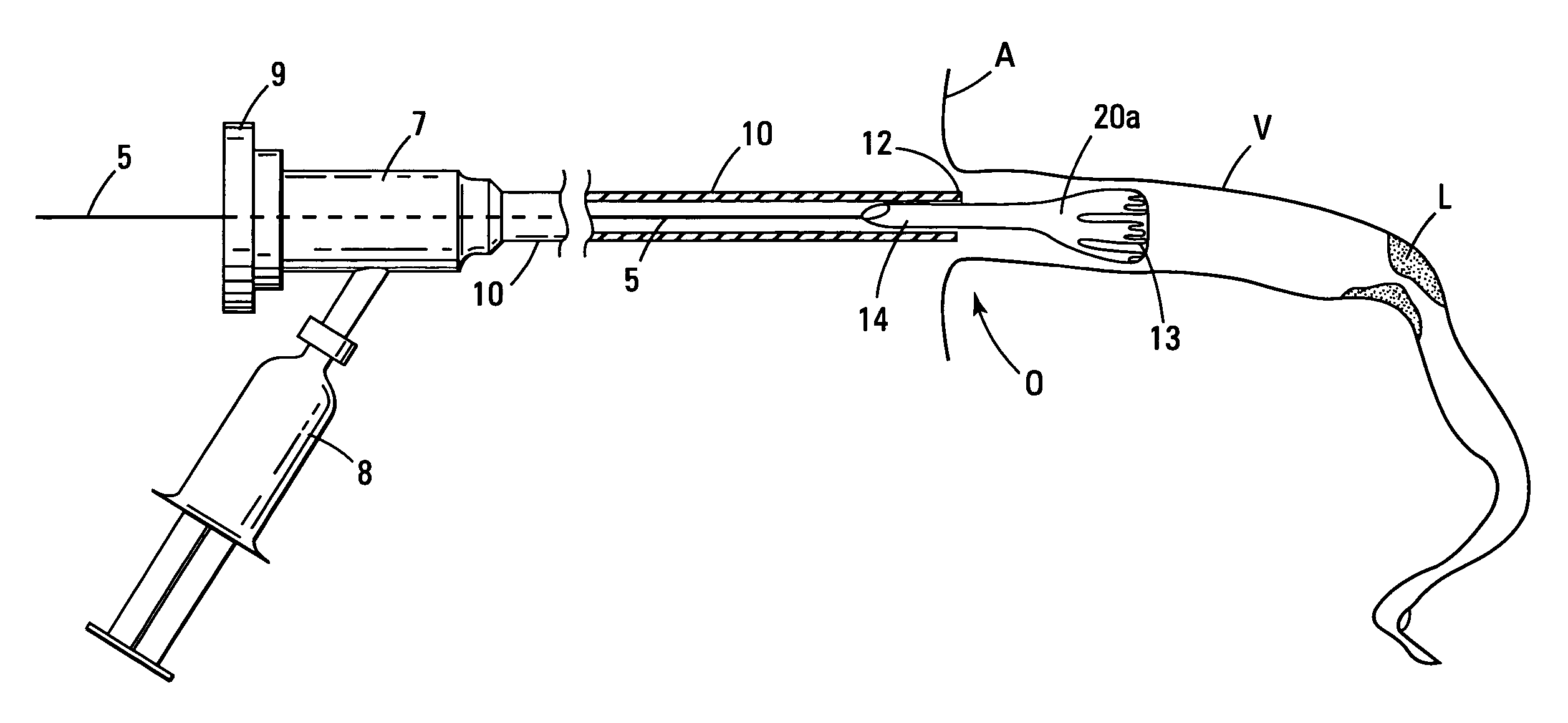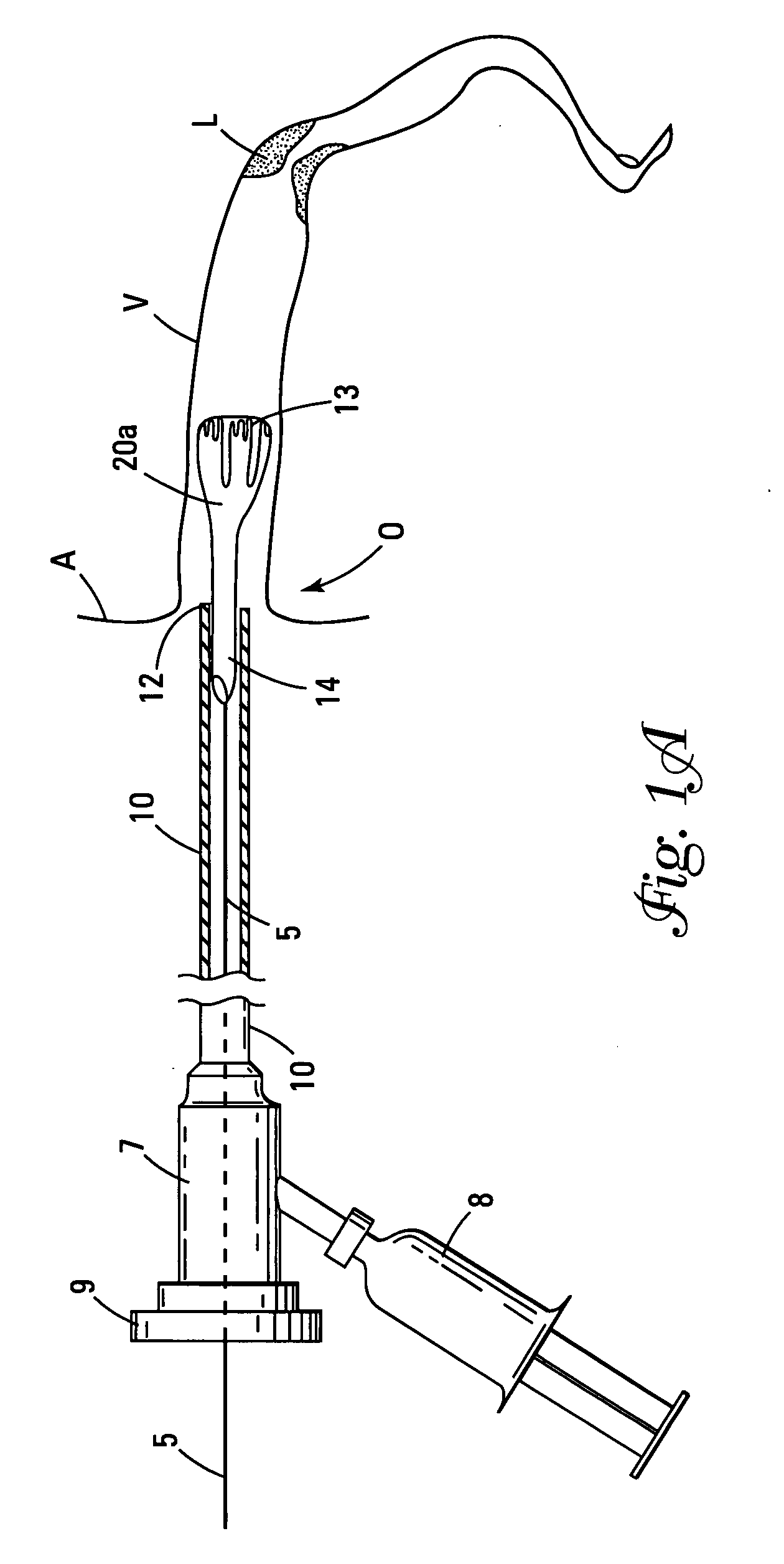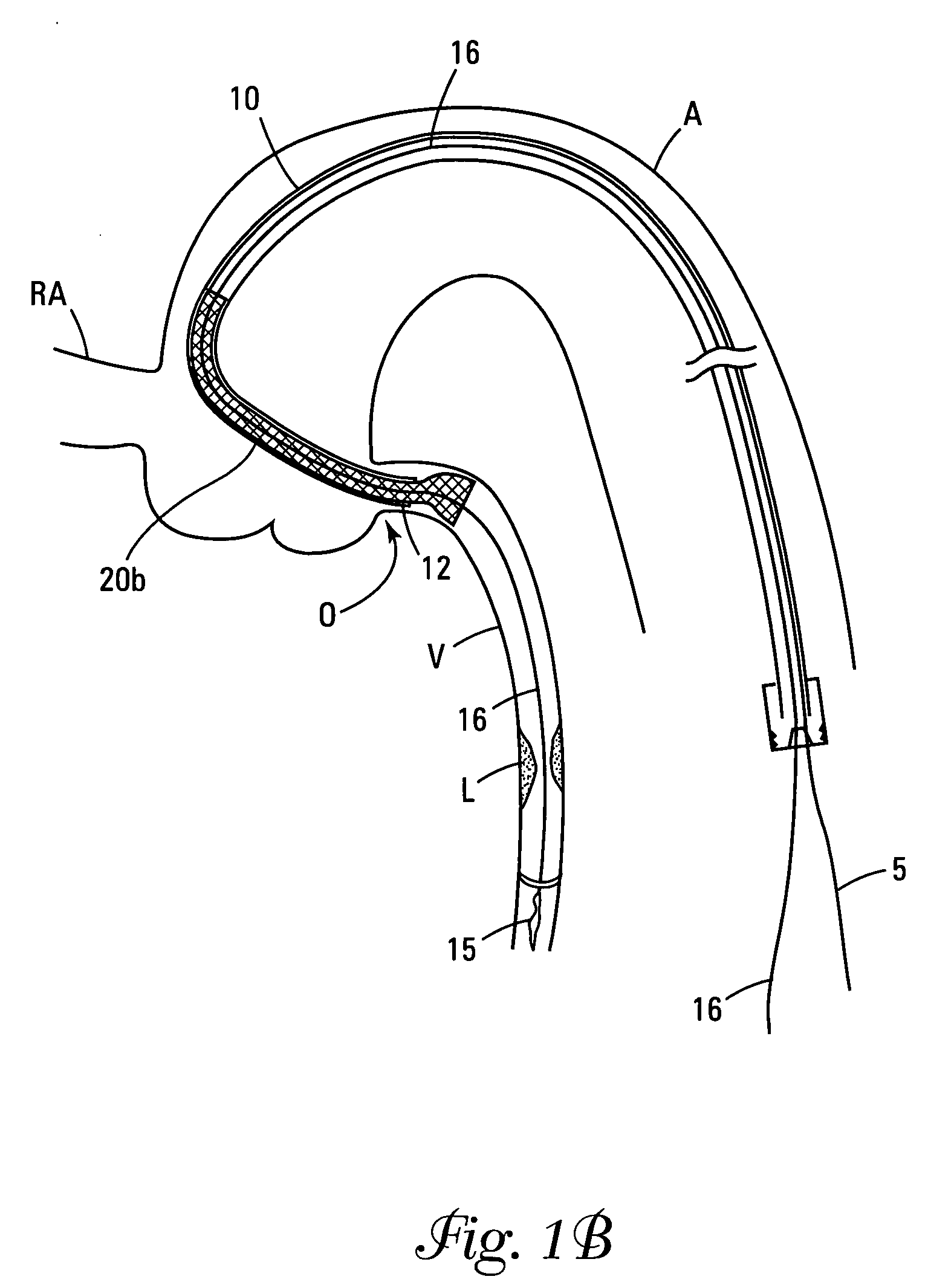Device to create proximal stasis
a technology of proximal stasis and catheters, applied in the field of devices, a system, and a method for treating vascular disease, can solve the problems of no-flow condition and myocardial infarction, high incidence of distal embolic material release, and release of embolic material
- Summary
- Abstract
- Description
- Claims
- Application Information
AI Technical Summary
Benefits of technology
Problems solved by technology
Method used
Image
Examples
Embodiment Construction
[0044] The terms “distal” and “proximal” as used herein refer to the relative position of the guidewire, catheters, and guide seal in a lumen. “Proximal” refers to a location upstream and “distal” refers to a location downstream. Flow of blood through a lumen normally moves from the proximal to the distal portions of the device of this invention, however, the device interrupts this flow and a retrograde flow may be established.
[0045] The Figures describe various embodiments. Elements that vary from one embodiment to another but otherwise are similar in shape, size, relative placement, or function are denoted by suffices “a”, “b”, “c”, etc., and may be referred to in a general way by a number without its suffix.
[0046] The present invention is a device for occluding blood flow in a vessel at a location proximal to a treatment site in the vessel, thus preventing embolic material from moving distally in the vessel, prior to deployment of an embolic protection device positioned distall...
PUM
 Login to View More
Login to View More Abstract
Description
Claims
Application Information
 Login to View More
Login to View More - R&D
- Intellectual Property
- Life Sciences
- Materials
- Tech Scout
- Unparalleled Data Quality
- Higher Quality Content
- 60% Fewer Hallucinations
Browse by: Latest US Patents, China's latest patents, Technical Efficacy Thesaurus, Application Domain, Technology Topic, Popular Technical Reports.
© 2025 PatSnap. All rights reserved.Legal|Privacy policy|Modern Slavery Act Transparency Statement|Sitemap|About US| Contact US: help@patsnap.com



